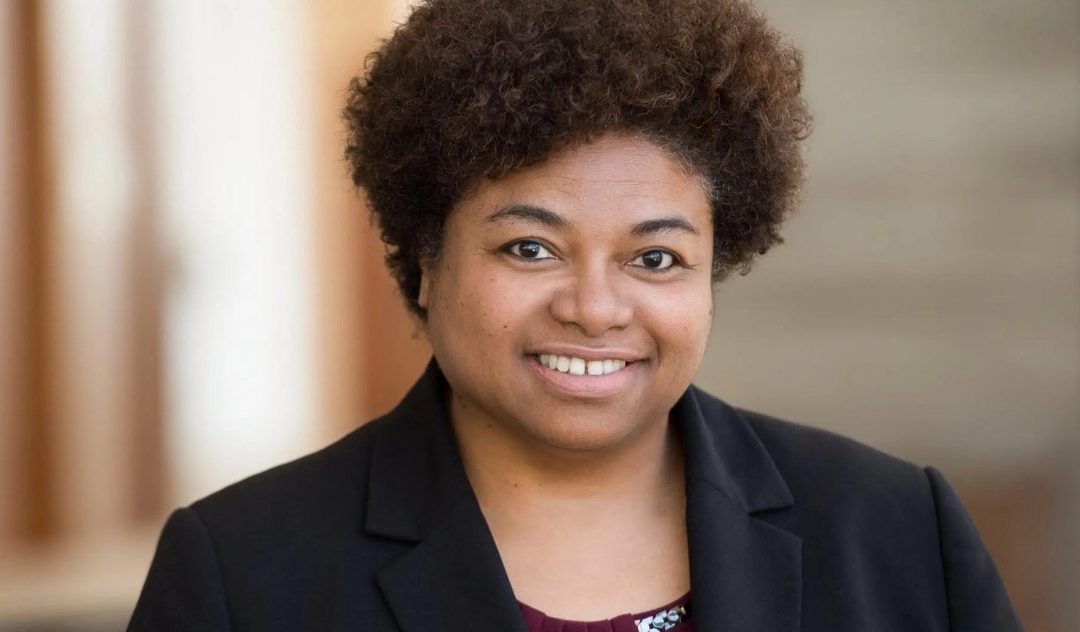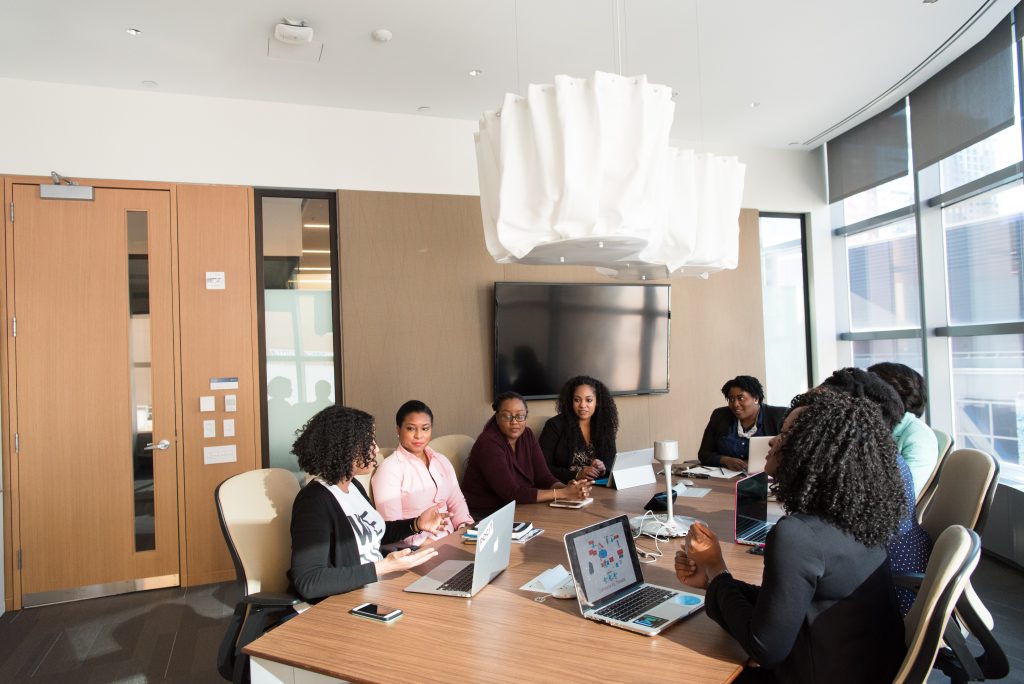How One Black Woman Has Dedicated Decades Of Her Life To Changing the Face of Tech For People Of Color With Disabilities

The technology industry’s academic and professional spaces have a long reputation of exclusivity and discrimination that has led to an industry that is predominantly all white and male – but some people are working hard to change this picture.
POCIT sat down with Rose Robinson, Executive Director of Center for Minorities and People with Disabilities in IT (CMD-IT), for an in-depth conversation on the barriers facing people of color with disabilities in tech.
Robinson has more than 25 years under her belt. Her role at CMD-IT means she can use this extensive experience to lead efforts to disrupt industries, invest in building an inclusive workforce in computing and IT that elevates minorities and people with disabilities.
Inspired by her personal experience – having a sister who is blind and two nephews with muscular dystrophy – she has been able to campaign for robust change passionately.
Previous research by the Harvard Business Review has found that over a third of disabled people have experienced negative bias in their current job.
And the unemployment rate is reportedly twice as high for people with disabilities compared to the general population, even though companies that are inclusive of people with disabilities are considered more financially successful.
The team at CMD-IT are working tirelessly to create change in the industry and here’s how:
Hi Rose – great to have you on POCIT. Can you tell me a bit more about yourself and your journey into the tech space?
My journey started at Savannah State University, a historically black college and university (HBCU) located in Savannah, Georgia. I majored in Mathematics with a concentration in Computer Science. Being at an HBCU was one of the best times of my life, but I saw other students majoring in Computer Science, Mathematics, Engineering, Sciences, and other STEM majors.
It was not until I entered the corporate world where environments were undoubtedly different. I interned at one of the largest technology companies in Georgia and in Savannah, Gulfstream Aerospace, whose business is really out of reach for most, but the technology learned is beneficial for all. Then, right after college, I landed a job with an organization that was a large government contractor right outside Washington, DC,, which prompted a move for my family and me.
I worked on primarily federal financial systems for the US State Department, Internal Revenue Service (IRS), US Small Business Administration, and General Services Administration (GSA). In addition, new technologies provided an opportunity for advancement within the organization working on telecommunications billing software with BellSouth/AT&T, T-Mobile, Nextel International, and others. This helped with the foundation of infrastructure implementations and large e-commerce solutions.
It was in the infrastructure technology and e-commerce implementations where my career elevated to more senior management and leading large software implementations with distributed teams across the globe. It was a challenging but fascinating experience that elevated my technology experience and prepared me for my next role in geospatial. Geographic Information Systems (GIS) was not so well-known, but working with a company like TerraGo Technologies, amplified my desires for mapping technology and photo images.
TerraGo provides large imagery and mapping solutions in a lightweight PDF format. It coupled my love for Mathematics and Technology in one. Most of the clients were also the Department of Defense, military, and intelligence community on the cusp of using technology to support troops in theater and protect U.S. citizens domestically and abroad.

But I believe the most innovative opportunity I have had in my tech career was when I worked for myself as an independent tech consultant. I was able to choose tech projects that I wanted to contribute and participate in while having the opportunity to learn more and increase my knowledge in certain areas, like open source. I enjoy working for myself,, and it gave me the freedom to work with amazing people from a global perspective and provide insight into great technology that I’ve never seen before or had experience with. The travel was phenomenal,, and it allowed me to travel to six out of the seven continents on this earth. But it was taxing,, so slowing the pace for me, led me to support nonprofit organizations first at AnitaB.org and now CMD-IT.
Working at AnitaB.org, I was able to focus energy on including more women in the tech industry. CMD-IT allows me to give back to a community that gave me so much, including my family. As a black woman in computing and technology, I do not get to choose one way or the other,, and my contributions and engagement in communities were essential to have the support and guidance I needed to navigate throughout my career. I have had and still have great mentors and sponsors that would advocate for me, provide advice on career tracks and situations, but it was also important for me to have been the same for both my daughter and son,, who are both now in tech and thriving.
I am on this journey for a reason, and I am unsure where the destination will lead me, but if I can give back and pay it forward to the next generation of technologies, then the journey is all that matters.
I love the idea of giving back to communities as much as possible,, and you’re clearly doing that – but what are the challenges you experienced when you were a young person entering the sector?
Graduating from an HBCU and entering into corporate, it became very lonely quickly. I was mostly the only black person but also the only woman. But because I graduated from HBCU, I was quite confident, which served me well throughout my career. I never let being “the only” deter me from my abilities to the job and learn in the process. I believe this is what a handful of managers saw and thus took me under their wing to mentor and sponsor me in ways that elevate me and my career.

How did these hurdles help you get to where you are now? (Did they lead to perseverance, not giving up, searching for a mentor)?
My mentors and sponsors in my career helped me grow, manage certain situations and prepare me for the next stage of my career. My communities also supported me through various technical journeys like my open source community (Pythonistas), Systers (women technologists), and Black Women in Computing that supported me in various ways from career to personal growth and challenges faced in the workplace and my personal life. I felt I always needed extra support outside my work with people who understood my challenges and had similar paths.
What inspired you to get involved in the work of helping those with disabilities?
From my personal experience, my sister is blind, I have two nephews with muscular dystrophy (MD) who are wheelchair users, and one is autistic. So I have a different lens from disability, economics, and culture. At CMD-IT, we work at the intersection of race, gender, culture, and disability often, but the mainstream never really addresses these issues. Consider a young black man with MD and autism that may not have access to “premium” services for disabled persons due to various reasons like economics, access to information, and social workers. So ultimately, my family has experienced helping our family with disabilities for most of our lives.
Being part of the CMD-IT leadership team allows me to impact change in ways to support our disability community, help companies are more inclusive in their hiring practices and retention programs, and even perhaps contribute to policy changes for access and inclusivity. CMD-IT is working with four groups; African Americans/Blacks, Hispanics/Latinx, Native Americans/Indigenous people, and people with disabilities to ensure that all these groups are included and engaged in computing and information technology. It is the perfect opportunity.
What are some of the things the organization has achieved so far that you’re particularly proud of?
This September, we celebrated the 20th annual ACM Richard Tapia Conference with the Association for Computing Machinery. As the premier venue to acknowledge, promote and elevate diversity in computing, Tapia brought together more than 2,700 attendees at the virtual conference. With this year marking 20 years since the first Tapia Conference, it was essential for us to create space to display the work done in ensuring diverse representation in computing. I’m happy that we also focused on inclusion, as innovation is impossible without it.

What are some unique barriers professionals of color with disabilities face concerning accessibility?
With 36 million people who are blind around the world, many blind/visually impaired need assistive technology to navigate their world. For our deaf/hearing impaired community, many companies don’t include text and language captioning in their products. During conferences, we do our best to prepare our speakers and sponsors to ensure they are inclusive in their talk and language because you never know who is in the audience. The disability community has to work extra hard to contribute and engage in conversations and activities.
Is enough being done to help professionals of color with disabilities enter the sector and be supported along the way?
I believe we still have a long way to go. The Bureau of Labor Statistics shows that people with disabilities are still twice as likely to be unemployed and more likely to be underemployed than those without a disability.
Twenty-six percent of all American adults — totaling 61 million people — have a disability, but as of August 2021, only 35.6% of people with disabilities who are of prime working age (ages 16 through 64) are actively employed, compared to 76.8% of people without disabilities in the same age range. Providing people with disabilities equal working opportunities only strengthens the job force and give chances to contribute talent to a group of underrepresented and deserving people.
How does diversity lead to innovation?
Innovation and robust solutions are created when safe spaces exist for historically excluded communities to feel comfortable delivering the best work and be confident in expressing ideas. Diversity allows for various ideas, drawing from different life experiences and unique perspectives, contributing to a more dynamic workforce.
What are some programs that CMD-IT has created to address inequities in academia directly and the job force?
CMD-IT believes in providing leadership opportunities from the ground up. Our organization hosts year-round programs focused on the elevation of marginalized groups in tech:
- Academic Career Workshops: CMD IT provides mentorship workshops to assistant- and associate-level faculty, senior doctoral students, and postdocs in computing about academic careers.
- The LEAP Alliance: The Diversifying LEAdership in the Professoriate (LEAP) Alliance helps address the broadening participation challenge of increasing the diversity of the future leadership in the professoriate in computing at research universities as a way to achieve diversity across the field.
- Graduate School Fair: CMD-IT hosts a virtual Graduate School Fair presenting schools from around the country with computer science and other computing programs. This career fair includes participating colleges and universities with various programs in computer science and other computing and information technology disciplines that offer robust Masters and Ph.D. programs.
- Innovation Solutions Challenge: CMD-IT uses ChallengeRocket as a platform to submit challenges, connect with others and take coding challenges. The platform uses AI/machine learning in coding challenges to provide instant real-time feedback for participants that want to test and improve their programming or scripting skills.
Ways that colleges and universities can help encourage minorities in computing fields?
Colleges and universities are in a great position to prepare students to enter the diverse workforce and ensure everyone feels they are included. Here are a few ways on how they can help.
The first thing many colleges/universities can do for their undergraduate diverse students is to bring them to the Tapia conference at the very least in their first year so that they learn about computing opportunities, latest research and connect with a wider range of computer scientists, and technologists in the industry. Bring them back each year if possible, but Tapia also provides students opportunities to meet with companies to learn about intern opportunities and land their first job immediately impact their economics for generations to come.
Many colleges and university computing departments are challenged with recruiting diverse students and retaining them. CMD-IT has a program, University Award, that dives deeper into their retention programs but also builds a community of other colleges/universities who are tackling the same problem. The CMD-IT University Award recognizes university Computer Science departments that are making efforts in retaining computer science students.
Another program at CMD-IT is our LEAP alliance. These are the top producing universities for computer science faculty in the country. The alliance ensures their diverse computer science students are supported academically and socially, provides mentors to students with diverse faculty, and assists financially with CMD-IT partner program support.
Our Innovation Challenge pairs students with industry professionals to build solutions that address issues in their community that are not necessarily mainstream. Learning opportunities from a technology standpoint and creating sustainable solutions is what innovation is about.
From a technology perspective, include accessibility as a core competence in your program. It does not have to be coding for accessibility, but adding awareness in the cultural aspect of computing and technology can advance students’ perspectives and think about the products and services or their interactions with customers or consumers.




